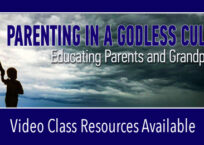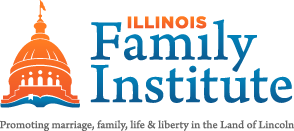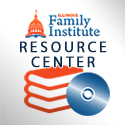
Educators in Helena, Montanahave proposed a health curriculum that includes ideas so controversial that it is gaining national attention. Please read this article about what’s taking place in Montanabecause there are activist ideologues right here in Illinoiswho would like to see similar curricula in our elementary schools.
At a recent contentious school board meeting, one woman attempted to justify this curriculum by claiming that some families are not teaching this material to their own children. She expressed worry about “the kids whose parents never show up for school functions, who don’t talk to their kids at all, who provide no information, and possibly lead turbulent lives.”
Wow. Does she actually know families in her town who “don’t talk to their kids at all” and who “provide no information” and who “lead turbulent lives”? And does she actually think the solution to such an extreme family situation is to provide detailed, controversial information about sexual matters that are intimately entwined with personal belief systems, including religious belief systems, to all children?
Here are some of the ideas that this mother thinks will solve the ills that befall children raised in negligent families and that some public servants believe will improve the lives of all children (Italicized sections are quotes from theMontana health curriculum.)
Kindergarten:
Introduce basic reproductive body parts (penis, vagina, breast, nipples, testicles, scrotum, uterus)
No young child has any intrinsic or compelling need to know the anatomically correct terms for body parts related to sexual (or excretory) functions. Despite “progressive” declamations to the contrary, young children function quite well using colloquial terms that many parents find more charming, more euphonious, and less clinical. If communication is the point of language, “tush” seems to work as well as “buttocks.”
Do these language police object to parents using the word “noggin” instead of head; or “tummy” instead of abdomen or stomach; or “pointer” rather than “index finger”; or “peepers” instead of “eyes”? Are these pedagogues going to insist society use the correct term, “laryngeal prominence,” rather than the colloquial term, “Adam’s Apple”?
Recognize small children make many decisions, such as what clothes to wear, [or] which toys to play with…
For those unaccustomed to reading between the lines of subversive educational material, this is intended to prepare students to think affirmatively about “gender fluidity,” “gender identity,” or “gender non-conformity,” more accurately known as Gender Identity Disorder. In discussions of “gender identity,” I wonder if they will explain to children that it is disorder, and I wonder if they will explain to children that there is considerable scientific research proving that there are many real, measurable differences between boys and girls. I wonder if they will explain at any point in grades K-12 that amputating healthy penises or breasts and cross-dressing does not actually change the biological sex of the confused patient. After all, we wouldn’t want any child to think that his or her mother’s mastectomy has rendered her a man.
Recognize that family structures differ
“Family structures,” like the term “family diversity” is an umbrella term to secrete discussions of families led by homosexuals into the classroom without parents realizing. For those who mistakenly believe that these discussions are value-neutral, please note that discussions of diverse family structures do include families that are led by homosexuals while excluding families led by incestuous couples or polyamorous families. The reason for these exclusions is not that there are few of these family structures, but rather that the inclusion of them would serve to normalize structures that are viewed as immoral. So, the inclusion of families led by homosexuals reveals the presence of approval of homosexuality.
Grade 1:
Understand human beings can love people of the same gender & people of another gender.
This falls under the “Human Sexuality” category in the health curriculum, so it is clear that this statement refers to sexual and romantic love. It is equally clear that this statement embodies an implicit moral claim. Imagine if the statement were “Understand that human beings can love one person or more than one person at the same time,” or that it said “Understand that human beings can love people who are not blood-related and people who are close blood relations.”
Grade 2:
Understand making fun of people by calling them gay (e.g., “homo,” “fag,” “queer”) is disrespectful & hurtful.
No one should be called names, but why use homosexual epithets when there are so many conditions for which children are bullied? In addition, would teachers make clear during discussions of homosexual epithets that statements of moral disapproval of homosexual acts do not constitute bullying? Those parents of elementary school children who are successfully able to protect their children from images of and ideas about homosexuality should not have to worry about their public school exposing them to this serious sin.
Acknowledge that individuals & families have a variety of values as it pertains to sexual behaviors.
Really? At an age when many parents have not discussed sexual behaviors at all, schools are going to introduce sexual relativism?
Grade 3:
Demonstrate empathy and understanding towards families who have ended or are in the process of ending committed relationships.
The creators of this curriculum evidently concluded that teaching children to be empathic and understanding about divorce or the ending of committed relationships is more important than teaching children about the devastating impact of divorce on children. Many would argue that teaching children from a young age about the impact and legacy of divorce would better serve children and society than creating in children positive feelings about divorce. (As an aside, if a relationship is ending, it is not “committed.”)
Grade 4:
Define stereotype – the belief that all people of the same gender should behave the same way.
If the goal is simply to define stereotype, why choose gender? This is a stratagem for normalizing cross-dressing and other troubling manifestations of Gender Identity Disorder.
Grade 5:
Understand that sexual intercourse includes but is not limited to vaginal, oral, or anal penetration.
Have the designers of this curriculum entertained the possibility that there are students who have not heard about anal or oral sex (or whatever other forms of penetration these educators hope to introduce) by fifth grade, and therefore the school would be introducing them to new and potentially troubling ideas and practices?
Understand sexual orientation refers to a person’s physical and/or romantic attraction to an individual of the same and/or different gender, and is one part of ones’ personality.
“Sexual orientation” is a politically loaded term created by the homosexuality-affirming lobby to give disordered attraction and immoral behavior a patina of normality, heritability, and immutability. It is intended to reinforce the false comparison of homosexuality to race.
Grades 9-12:
Understand erotic images in art reflect society’s views about sexuality & help people understand sexuality.
Why do high school students need to understand erotic images in art? Most high school students never study non-erotic images in art. Why, in this decadent, post-modern society that is swimming in pornography, would “educators” think that public schools’ pedagogical task includes exposing students to more erotic imagery?
If the pedagogical goal is to help students better understand sexuality, why not expose them to both contemporary and historical thinkers on this issue to learn how societies throughout history have viewed sexuality?
If the goal is to help students better understand art, why not teach them about how Christianity has inspired much of the greatest art ever created from sculpture to architecture to painting to literature to music?
The woman who spoke in defense of this curriculum should be asked why any very young children, including those with negligent parents, need to be taught the technical names for sexual anatomy, or about gender non-conformity, or about families led by homosexuals, or about homosexual epithets, or about homosexual attraction, or about erotic art.
Presumptuous educators have expanded the purview of their jobs to encompass anything they want to teach. And the expansion pertains in large measure to “progressive,” value-laden, controversial subjects. There are all sorts of important subjects about which our schools could teach our children and which would be more suitable for public schools. For example, even many secular educators argue that biblical literacy is critical for a solid understanding of literature and history. Children should be taught more mythology and poetry, and more about the Constitution and the Declaration of Independence. They could benefit from learning Latin. And how about modesty. I think society would be well served by inculcating children from young ages with the value of modesty.
Some believe that it is critical for children to know the developmental facts about fetal development before the age at which girls can conceive. They also want children to know what happens to a pre-born baby during abortion, prior to the age at which some girls may seek an abortion. And they want children to know about the possible emotional and physical risks of abortion before the age of fertility. Some parents don’t share this critical information, and therefore–according to progressive educators–it’s incumbent upon public schools to provide it. This information will likely be relevant to far greater numbers of students than will information about Gender Identity Disorder. I wonder if the Helena, Montana Board of Education would consider adding this information to their health curriculum.
Some families are failing to provide factual information about homosexuality. Parents are not telling their children that there is no science proving biological causation. They are not telling children that there are thousands of men and women who have renounced homosexuality and now live heterosexual lives. Parents are not telling their children about the astonishing rates of HIV infection among the group the Centers for Disease Control refers to as “men who have sex with men.” Many parents are not telling their children about the voluminous social science research that demonstrates that children fare best when raised by a mother and father. Since parents are failing to provide this factual information, perhaps public schools should.
Or perhaps presumptuous public educators should reduce the scope of their ambitions regarding what they teach other people’s children. They are robbing children of their innocence, undermining parental rights, and breaking down natural and good barriers of modesty before they even have a chance to develop.
Virtually every idea related to homosexuality and Gender Identity Disorder that is presented to children in public schools today represents an unproven, non-factual philosophical, political, or moral assumption. Parents and other taxpayers who care about children, parental rights, the future health of this country, and truth must be vigilant about the resources to which their children are exposed and courageous and tenacious in opposing curricula like the one community members are boldly opposing in Montana. Be especially wary of health curricula and anti-bullying resources because those are the cunning means by which activist ideologues are bringing in homosexuality affirming resources to our elementary schools.
































